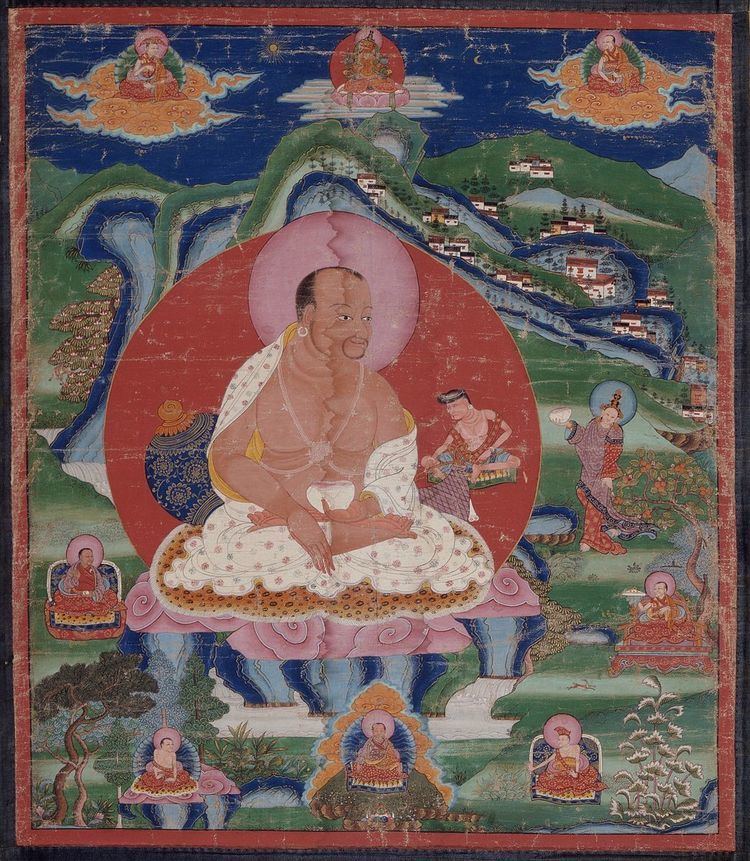 | ||
Dagpo Kagyu Tibetan: དྭགས་པོ་བཀའ་བརྒྱུད, Wylie: dwags po bka' brgyud encompasses the branches of the Kagyu school of Tibetan Buddhism that trace their lineage back through Gampopa (1079-1153), who was also known as Dagpo Lhaje (Tibetan: དྭགས་པོ་ལྷ་རྗེ, Wylie: dwags po lha rje) "the Physician from Dagpo" and Nyamed Dakpo Rinpoche "Incomparable Precious One from Dagpo". All the institutional branches of the Kagyu tradition of Tibetan Buddhism surviving today, including the Drikung Kagyu, the Drukpa Lineage and the Karma Kagyu, are branches of the Dagpo Kagyu.
Contents
- Dagpo Kagyu Lineages
- The four primary sub schools of the Dagpo Kagyu
- The eight secondary sub schools of the Dagpo Kagyu
- The Drukpa Lineage
- Dagpo Kagyu Lineages Today
- References
Narrowly, the term Dagpo Kagyu is sometimes used to refer specifically to the lineage of Gampopa's own monastery of Dagla Gampo. This lineage passed from Gampopa to his own nephew Dagpo Gomtsul. Dagpo Tashi Namgyal (1511-1587) was an important lama in this lineage.
Dagpo Kagyu Lineages
Following Gampopa's teachings, there evolved the so-called "Four Primary and Eight Secondary" lineages of the Dagpo Kagyu School.
The four primary sub-schools of the Dagpo Kagyu
The eight secondary sub-schools of the Dagpo Kagyu
The eight secondary lineages (zung bzhi ya brgyad or chung brgyad) of the Dagpo Kagyu all branched from the Phagdru Kagyu tradition and were founded by senior disciples of Phagmo Drupa Dorje Gyalpo or their immediate successors.
The Drukpa Lineage
The Drukpa Lineage, often enumerated outside the four primary and eight secondary sub-schools, was founded by Ling Repa's disciple Tsangpa Gyare (1161–1211). His fifth incarnation and eighteenth hereditary lineage holder, Ngawang Namgyal (1594–1651), the 1st Zhabdrung Rinpoche, founded the state of Bhutan and established the Southern Drukpa Lineage as its state religion.
Dagpo Kagyu Lineages Today
The principal Dagpo Kagyu lineages existing today as organized schools are the Karma, Drikung and Drukpa Kagyu. For the most part, the teachings and main esoteric transmissions of the other Dagpo Kagyu lineages have been absorbed into one or another of these three independent schools.
